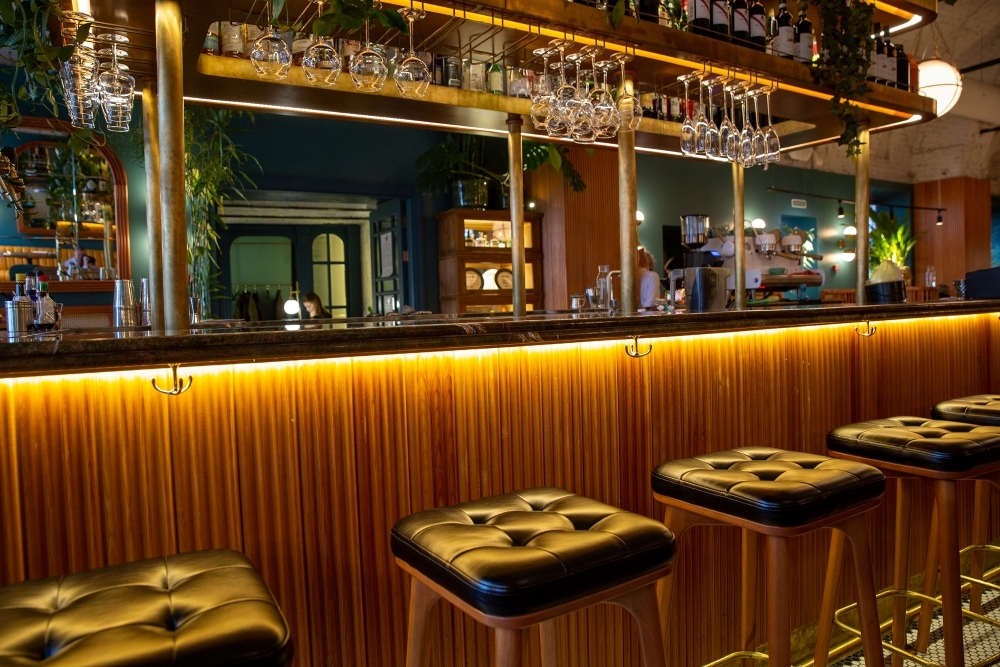Inside Freddie Mercury’s London Home
Who Wants to Live Forever?

Freddie Mercury is one of the world’s most beloved, larger-than-life rockstars. He revolutionised rock music and is still an icon to many all across the world, who fell in love with his charm, charisma, and outrageous sense of humour. Born Farrokh Bulsara in 1946, Mercury was eight years old when he began taking piano lessons and developed his musical skills. His family moved to England in the 1960s, due to political unrest in Zanzibar.
Freddie attended Ealing Art College in London and in the 1970s he met guitarist Brian May and drummer Roger Taylor, with whom he formed the now legendary rock band Queen. Mercury’s incredible creativity was central to the development of Queen’s one-of-a-kind sound, which blended rock, opera, theatre, and pop. Mercury’s flamboyant stage presence and astonishing vocals propelled the group to enduring fame.
The incredible success of Queen allowed Mercury to buy his beautiful London home, located at 1 Logan Place in Kensington, in 1980. The Georgian-style house was known affectionately as Garden Lodge and was a private retreat for Mercury during his time with Queen, but it also reflected his boundless creativity and character. The house was decorated in Mercury’s eclectic style, blending designs from the Victorian period with Japanese influences.
Mercury, despite his larger-than-life public persona, was an intensely private person and it was in this beautiful home that he found respite from the world with his friends and fellow artists. Following his untimely death from AIDS-related illness in 1991, Garden Lodge was left to his dear friend (and former fiancé) Mary Austin. Austin lived in the home for thirty years, preserving Mercury’s legacy, until the house came on the market in 2024. The property remains a site of pilgrimage for fans, who often travel there to leave messages and tokens on its walls for Mercury, whose life meant so much to so many.
The House
Built in a Neo-Georgian style in 1907, the house features astonishing double-height ceilings, a mirrored dressing room, a bar, a library, and a gorgeous Japanese-style garden. The house is accessed through a now famous green door in the garden wall. Austin, who inherited the home following Mercury’s death, notes that from the moment she and Freddie “stepped through the fabled green door” the house served as “a place of peace, a true artist’s house.” However, Mercury’s ostentatious side is there, too, in particular in the mirrored dressing room, where he would don his signature white trainers and wax his fabulous moustache before a concert.
Once through the green door and inside the front door, visitors are greeted by ornate door and window frames, vibrant yellow walls, and an eclectic mix of furniture. The saffron yellow that adorns the walls is said to have been Mercury’s favourite colour, and its brilliant warmth seems to encapsulate the singer’s extraordinary career. The two-floor drawing room is where Mercury kept his piano, the very same one on which he composed Bohemian Rhapsody. The bedroom, upstairs, is accessed through the ostentatious mirrored dressing room. Although Austin has since auctioned Mercury’s belongings in order to donate to HIV charities, the home was filled with his possessions and was almost a time capsule while Austin lived there. The property has a generous eight bedrooms, perfect for the lavish and entertaining gatherings of close friends that the singer held in this beautiful, private house.
The Gardens
Mercury was also heavily involved in creating the striking gardens for the home. Designed in a Japanese style, the gardens are full of gorgeous magnolia trees, which bloom in a blush pink. The garden also implements water features and a remarkable topiary. Such a large and well-appointed outdoor space is not common in Kensington, let alone in London more generally. To mirror the Japanese design of the garden, the house also featured a Japanese living room, decorated traditionally. The garden was also central to Mercury’s creativity, the music centre in the house looked out over the garden, as did the bar where he entertained his friends and guests. The music centre, surrounded by the garden's tranquillity, is where Mercury wrote some of the most spectacular songs of the twentieth century. It’s easy to imagine the driving force of Queen taking inspiration from the grandeur of nature to pen classics that jumped genres from classical to rock – and everything in between. The house was carefully arranged for Mercury to get the most out of his creative and artistic sanctuary, away from the world and prying eyes, tucked behind a large garden wall and surrounded by lush greenery.
Items in the Home
Prior to letting the property go, Austin sold 1500 items from the home, which she inherited along with the house after Mercury’s death. The items were sold at Sotheby’s, and the money raised went to the Mercury Phoenix Trust – a charity established by the remaining members of Queen that funds HIV/AIDS related initiatives and research –and to the Elton John Aids Foundation.
Among the items was a replica of St Edward’s crown. The real version of this crown was worn by King Charles III, at his recent coronation. The original crown was made in 1661 and is named after Edward the Confessor. It is crafted with solid gold and is set with precious stones, the monarchy’s authority. The replica was worn by Mercury during Queen’s 1986 Magic Tour. Mercury wore the crown with a red velvet robe, emphasising his love of theatre and grandeur, a tongue-in-cheek gesture to his status as the undisputed king of the stage. Images of Mercury in the robe and the crown are among some of the most iconic of the singer.
Also among the items auctioned were handwritten lyrics from some of Queen’s most famous songs and a handful of his stage costumes. Prior to the sale, some of the most famous pieces were toured as a display between New York, London, Los Angeles, and Hong Kong, allowing fans to see these much cherished items up close.
The green garden door of Garden Lodge, of which Austin speaks so fondly, and which has been covered in handwritten notes of love and admiration from fans, was also sold at the auction for the staggering price of £412,750. Mercury paid the large sum of £500,000 for the home in 1980. It was listed for sale in 2024 for over £30 million.
Speaking about the house ahead of the sale, Austin said: “It has been a joy to live in and I have so many wonderful memories here.” She expressed a desire to trust the sense of peace that she has felt in the home over the many years she has lived there to somebody else, in the hope that it will be for them, as it was for her and Mercury, a home for artists, music, and creativity.
The rhapsody of design inside this bohemian home was destined to align with the unmistakable creativity and passion of its former owner. Just like his music, his legacy, and his status as one of the greatest icons of popular culture, it will stand for many years as a beautiful addition to the landscape, attracting attention and recognition for all the right reasons.



